
Free Valentine’s Day Heart Tracing Worksheets for Preschoolers

Engaging preschoolers in fun, educational activities is essential for their overall development, and Heart Tracing Worksheets are a perfect choice. These worksheets combine creativity, learning, and motor skill development into one simple and enjoyable activity. Whether you’re a teacher, parent, or caregiver, heart tracing worksheets can brighten up your preschoolers’ learning routine, especially during festive times like Valentine’s Day.
Table of Contents
Why Are Worksheets Important?
Worksheets are not just about completing tasks—they foster a hands-on learning experience that boosts a child’s development in many areas. They encourage children to focus, practice new skills, and gain confidence in their abilities. For young learners, especially preschoolers, engaging in tracing and coloring activities like heart tracing worksheets provides a structured yet fun environment to learn essential skills.
Benefits of Using Heart Tracing Worksheets
- Improves Fine Motor Skills: Tracing patterns such as a spiral pattern, zigzag pattern, and diagonal zigzag pattern helps children develop the fine motor muscles needed for writing.
- Encourages Creativity: After tracing, kids can color the hearts with vibrant shades, fostering imagination and self-expression.
- Boosts Focus and Patience: Tracing carefully along vertical wavy lines, horizontal straight lines, and chevron patterns requires focus, improving attention span.
- Supports Pre-Writing Skills: These worksheets introduce the concept of controlled movements, paving the way for proper letter formation.
- Engages Learners: Creative patterns like spiral-square patterns keep young minds intrigued and eager to participate.
Who Can Use Heart Tracing Worksheets?
These worksheets are versatile and can be used by:
- Preschoolers (Ages 3-5): Perfect for early learners exploring shapes, patterns, and colors.
- Kindergarten Students: To practice pre-writing and refine fine motor coordination.
- Special Education Students: Heart tracing worksheets can offer a soothing, repetitive task that supports skill-building at their own pace.
Which Grade and Subject Are Worksheets Suitable For?
While Heart Tracing Worksheets are primarily designed for preschoolers, they can also be adapted for:
- Subjects: Early art, pre-writing skills, and beginner math concepts like shape recognition.
- Grades: Preschool to kindergarten and even early primary school, depending on the child’s learning needs.
Tips for Using Worksheets Effectively
- Start Simple: Introduce patterns like horizontal straight lines and progress to more complex designs such as closely spaced zigzag patterns.
- Use the Right Tools: Provide child-friendly pencils, crayons, or markers for tracing and coloring.
- Encourage Practice: Repetition is key. Offer different designs and patterns to keep the activity fresh and exciting.
- Offer Praise: Celebrate each completed worksheet to motivate your child further.
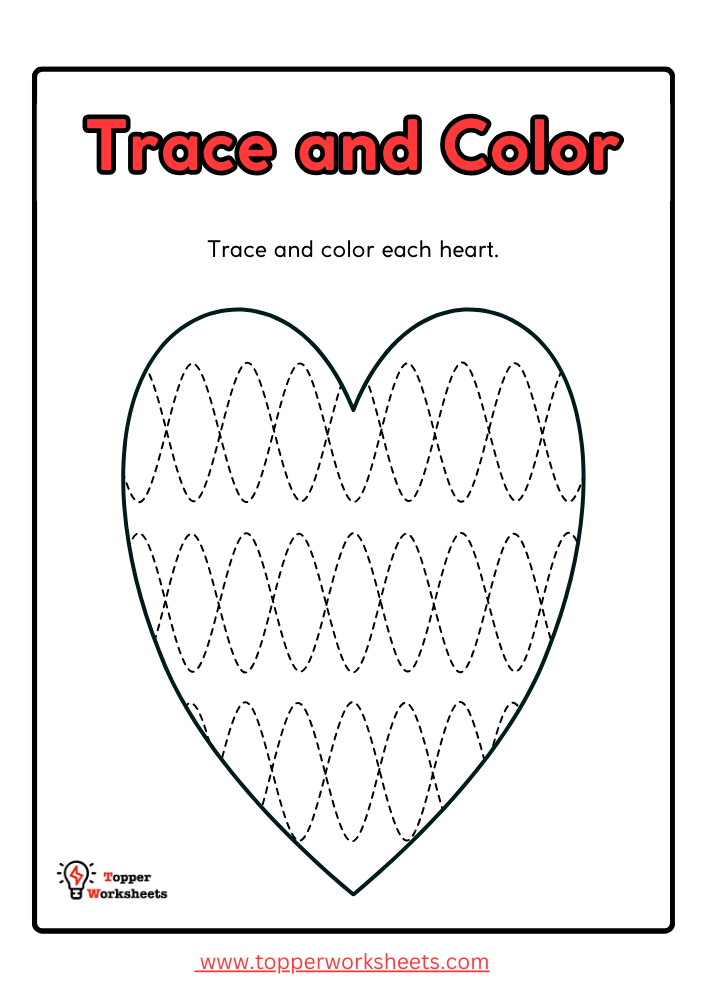

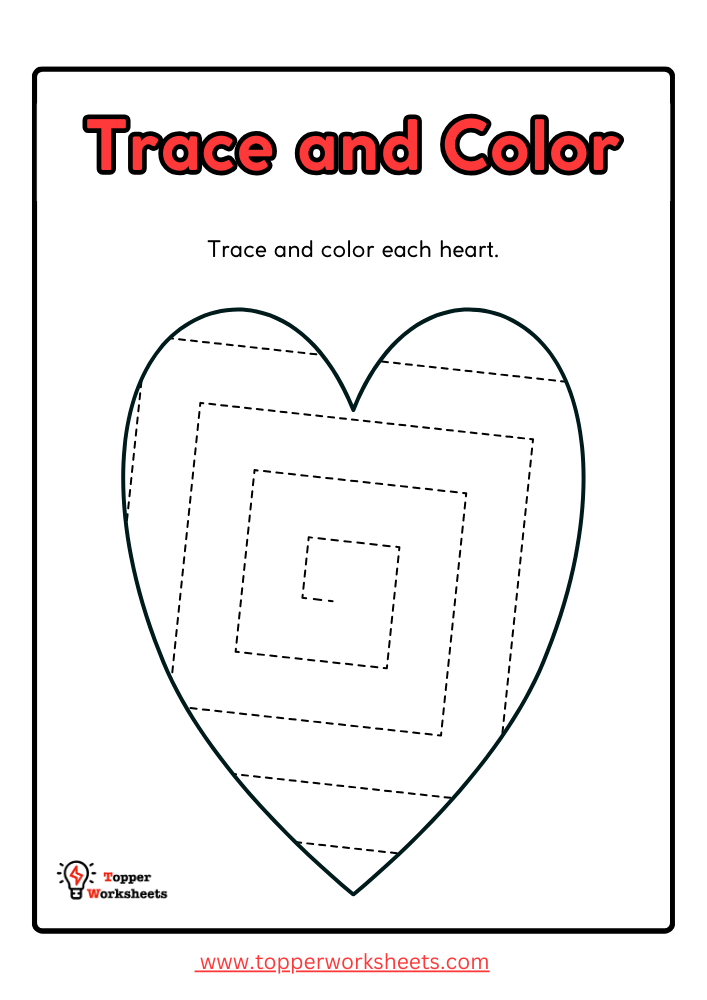
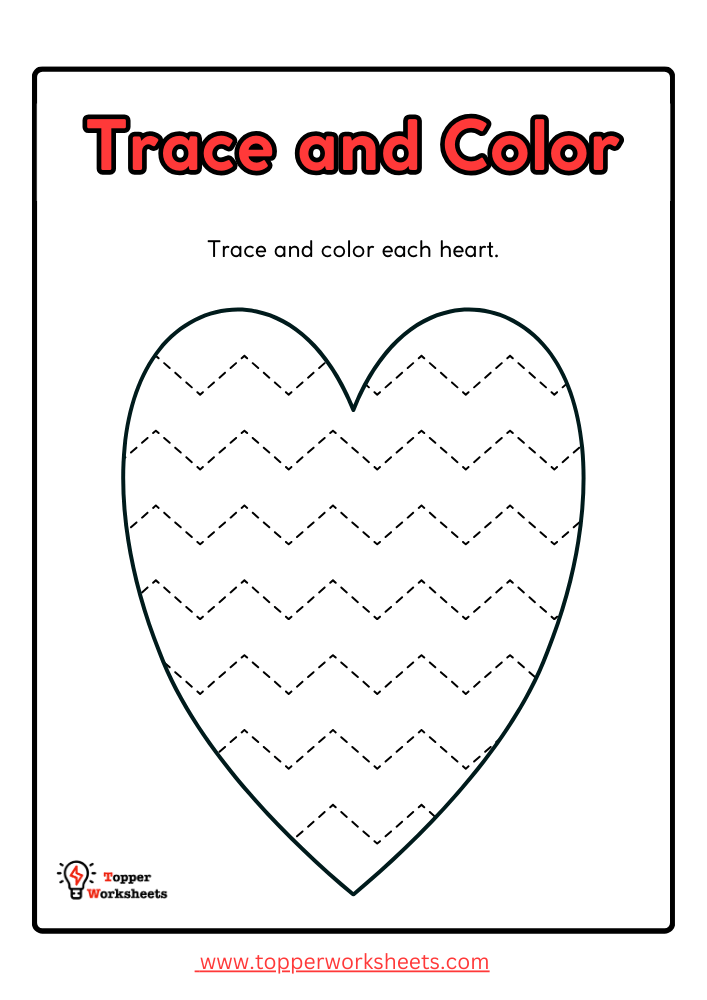
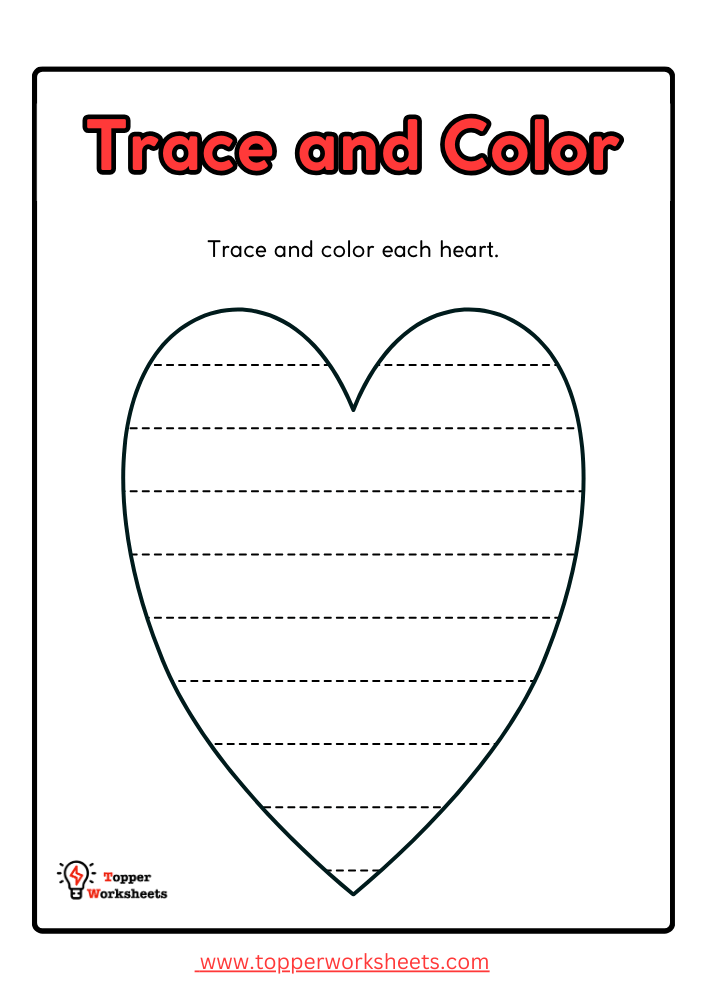
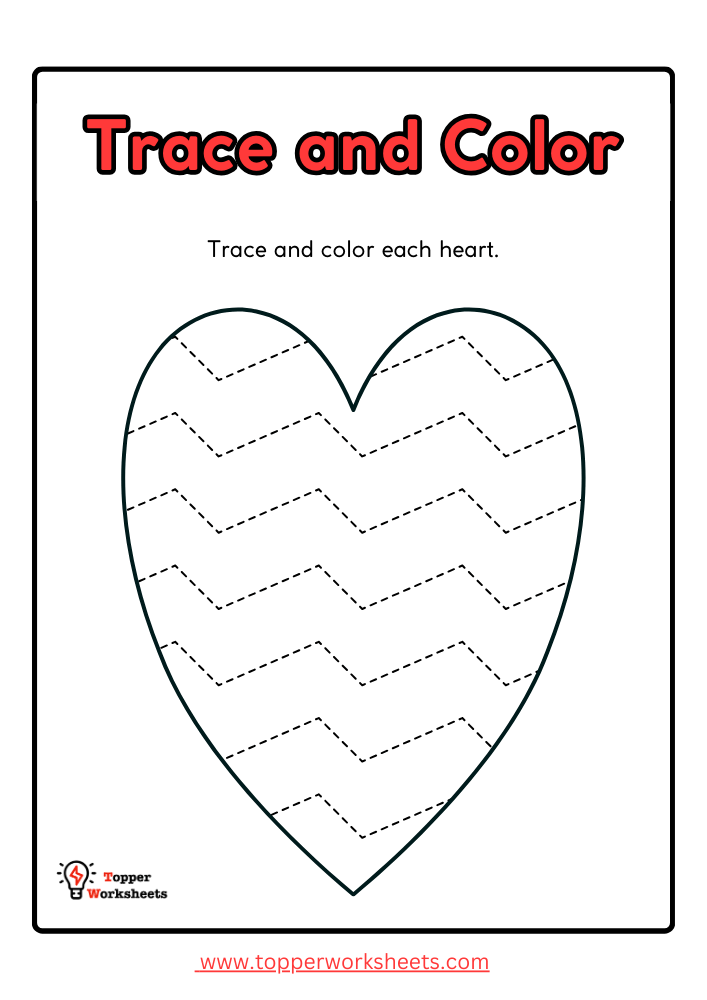
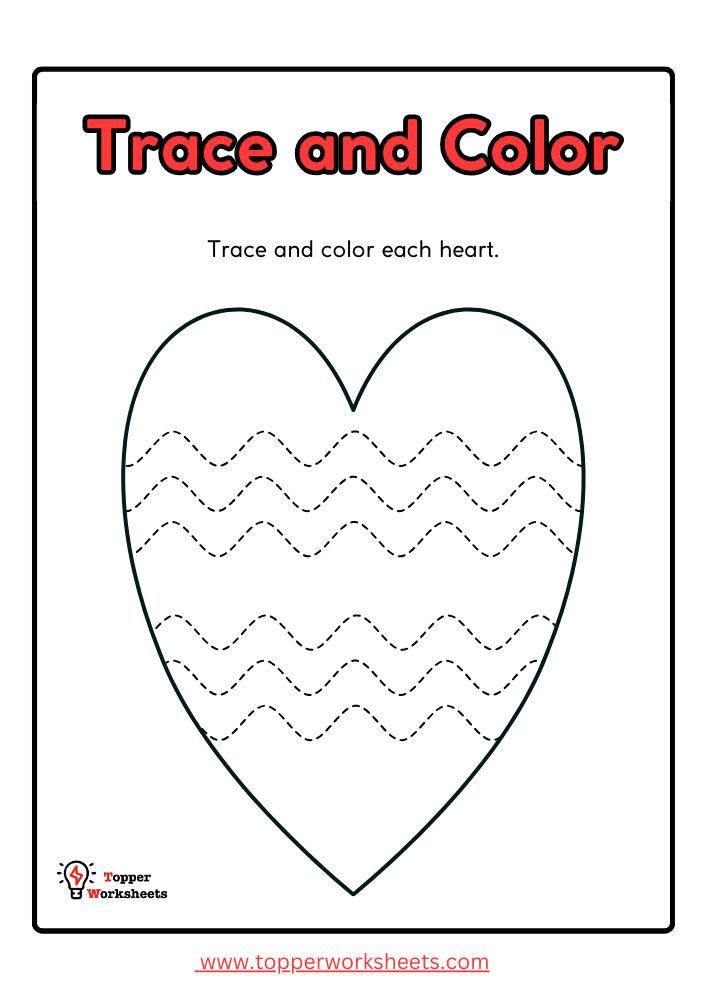
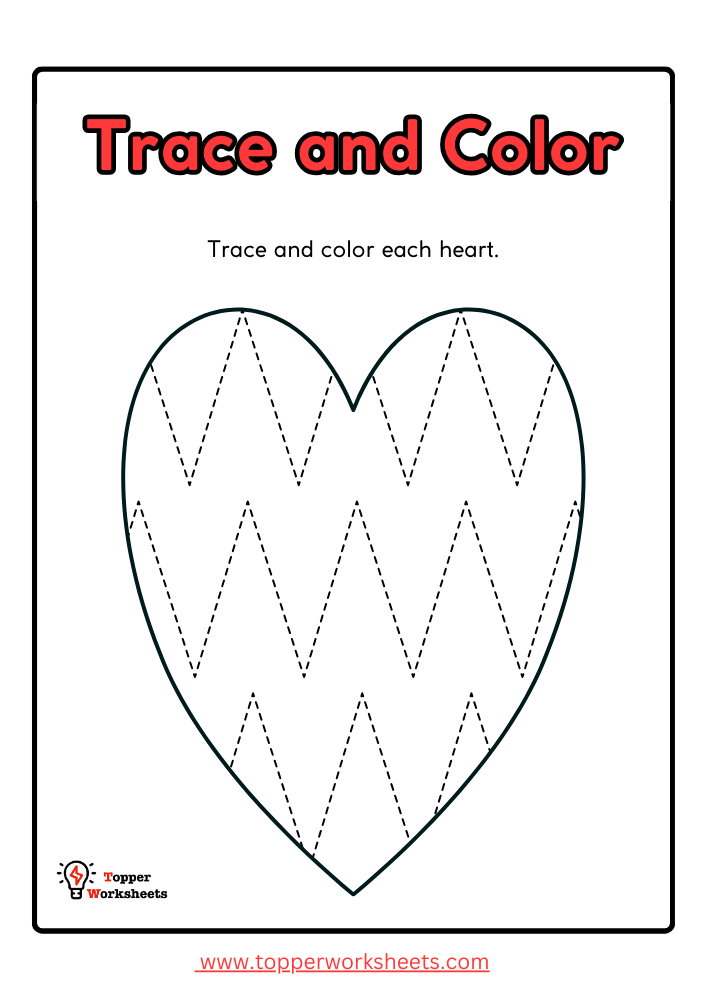

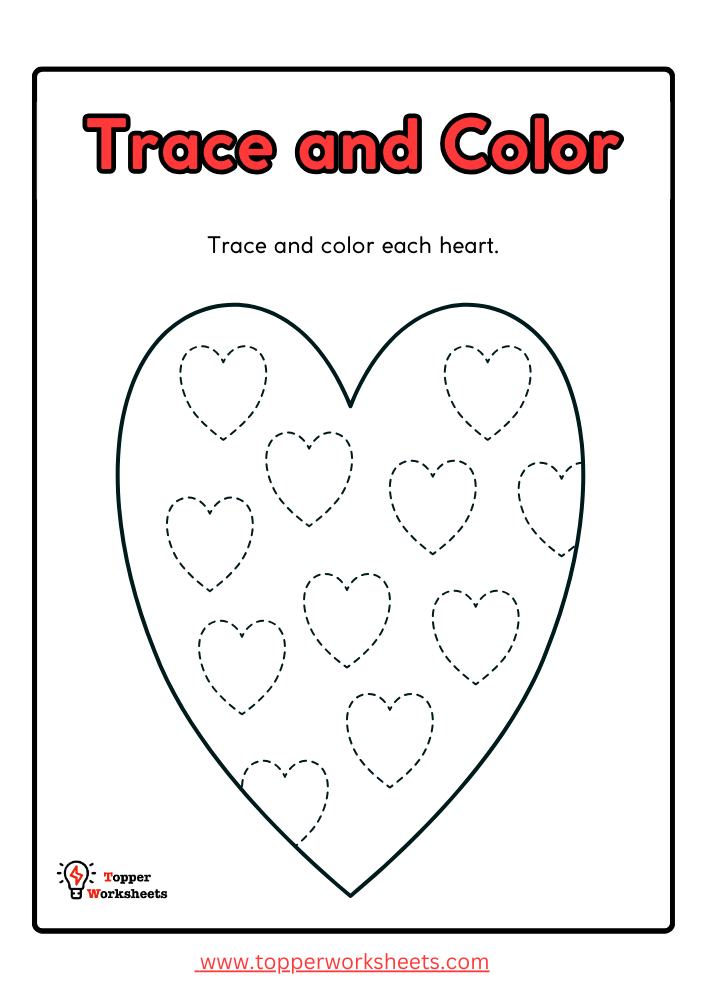
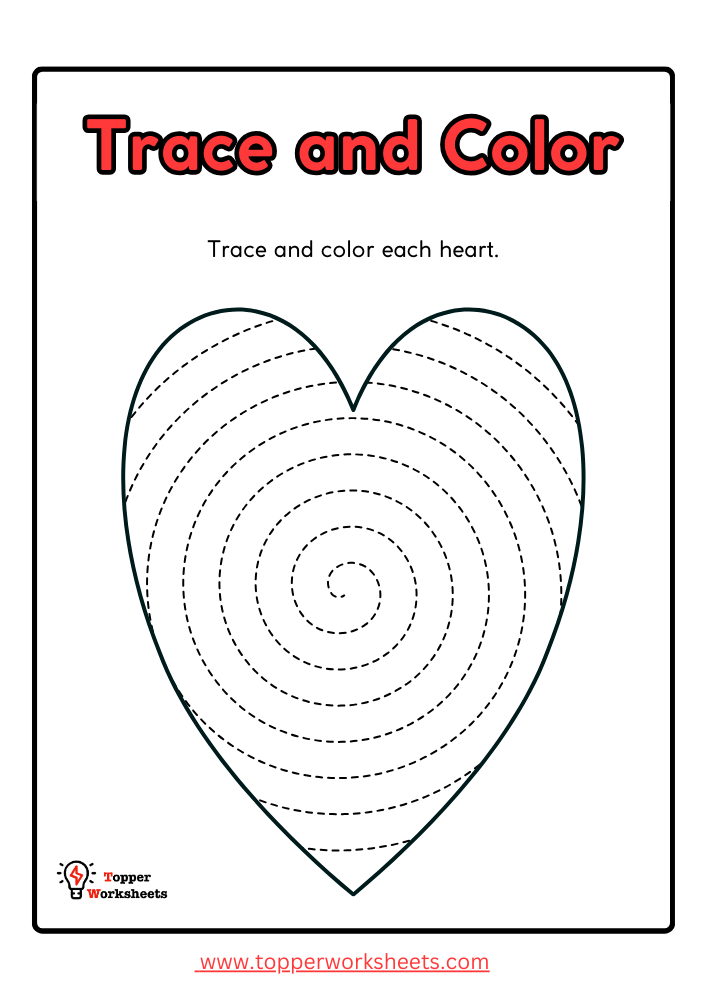

How to Download and Print Heart Tracing Worksheets
Downloading and printing Heart Tracing Worksheets is quick and easy:
- Click the link provided on the website or PDF file.
- Open the worksheet in a PDF viewer.
- Use a high-quality printer to ensure clear tracing patterns like spiral-square patterns and diagonal zigzag patterns are easy to follow.
- Hand them to your child along with coloring supplies for an engaging activity.
CLICK HERE
FAQ About Heart Tracing Worksheets
Q1: What is the main purpose of heart tracing worksheets?
These worksheets help preschoolers develop fine motor skills and pre-writing abilities through tracing and coloring activities.
Q2: Can older kids use heart tracing worksheets?
Yes! While designed for younger learners, older kids can use them for stress relief or creative art activities.
Q3: What types of patterns are included in heart tracing worksheets?
Patterns such as spiral patterns, chevron patterns, vertical wavy lines, and closely spaced zigzag patterns are commonly featured to add variety.
Q4: How many times should a child practice tracing?
Repetition is beneficial. Practicing tracing a few times weekly can greatly improve hand-eye coordination and writing skills.
By incorporating Heart Tracing Worksheets into your child’s learning routine, you are setting them up for success in a creative and enjoyable way. So, grab those crayons, print your worksheets, and let the learning begin!



